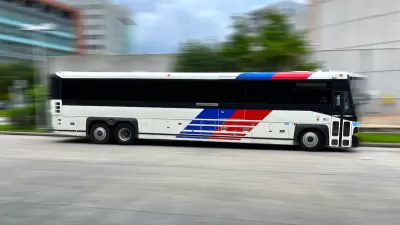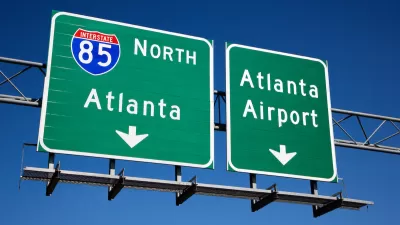Better integration between San Diego's various transit modes—trolley (light rail), bus, bus rapid transit, and active transit—are key to increasing use and housing options, argues AVRP planner Howard Blackson III.

Unlike POTUS, San Diego's Republican mayor, Kevin Faulconer, was able to have a state of the union address as scheduled. Well actually a state of the city address. Faulconer is a Republican who is no fan of "The Wall." Additionally, Faulconer actually believes in climate change, and more importantly is addressing it. Under Faulconer, the city has an aggressive Climate Action Plan. Increased use of transit is a key component.
Lack of affordable housing is a big problem in California and San Diego is no exception. San Diego has made efforts to increase housing density and to lift height restrictions near transit stations. However, these plans encountered vigorous neighborhood resistance on housing planned near a new station along the Mid-Coast extension of San Diego's "Trolley" light rail network.
Another problem is that San Diego's Trolley has used mostly existing rail rights-of-way to save cost. But this strategy has placed most trolley stations in sub-optimal locations, i.e., outside of walkable reach of neighborhoods. Blackson explains,
The problem today is that our Trolley acts like Commuter Rail by linking downtown to Santee and the border, as well as acting like a Streetcar by linking downtown’s Little Italy to Gaslamp. No matter where it is in the city, the trolley stops every 15 minutes at over 56 stations. Plus, it is limited in its ability to climb hillsides to access and serve the neighborhoods and districts located on our mesas.
He goes on to explain that the city's new bus rapid transit system is also compromised,
Our city’s new Rapid Bus service is essentially an Express Bus, or BRT-Lite, that flows with traffic, stopping at streetlights, and merging with all traffic on the freeways with 15-minute waits between buses.
Blackson argues that these and other transit modes used or planned by the city must be better integrated to increase ridership and compliment increased housing. He suggests moving away from the traditional model of buses as LRT feeder lines to a model in which BRT is more an expansion of LRT, so that it works more like LRT is supposed to work. Buses and streetcar lines can be used to connect neighborhoods and—together with LRT and BRT—to create an effective walkable multi-hub transit system.
See the source article for Blackson's "hierarchy" of transit modes.
FULL STORY: How to Achieve Walkable Transit Service in San Diego!

Alabama: Trump Terminates Settlements for Black Communities Harmed By Raw Sewage
Trump deemed the landmark civil rights agreement “illegal DEI and environmental justice policy.”

Study: Maui’s Plan to Convert Vacation Rentals to Long-Term Housing Could Cause Nearly $1 Billion Economic Loss
The plan would reduce visitor accommodation by 25% resulting in 1,900 jobs lost.

Planetizen Federal Action Tracker
A weekly monitor of how Trump’s orders and actions are impacting planners and planning in America.

Baltimore Ordered to Improve Sidewalk Accessibility
The city is one of many to face lawsuits for failing to comply with the Americans with Disabilities Act.

This Toronto Suburb Has More Bus Riders Than Columbus, Ohio
Brampton, Ontario used gradual improvements in service to prove that if you build it, they will ride.

Paris Bike Boom Leads to Steep Drop in Air Pollution
The French city’s air quality has improved dramatically in the past 20 years, coinciding with a growth in cycling.
Urban Design for Planners 1: Software Tools
This six-course series explores essential urban design concepts using open source software and equips planners with the tools they need to participate fully in the urban design process.
Planning for Universal Design
Learn the tools for implementing Universal Design in planning regulations.
Smith Gee Studio
Alamo Area Metropolitan Planning Organization
City of Santa Clarita
Institute for Housing and Urban Development Studies (IHS)
City of Grandview
Harvard GSD Executive Education
Toledo-Lucas County Plan Commissions
Salt Lake City
NYU Wagner Graduate School of Public Service





























